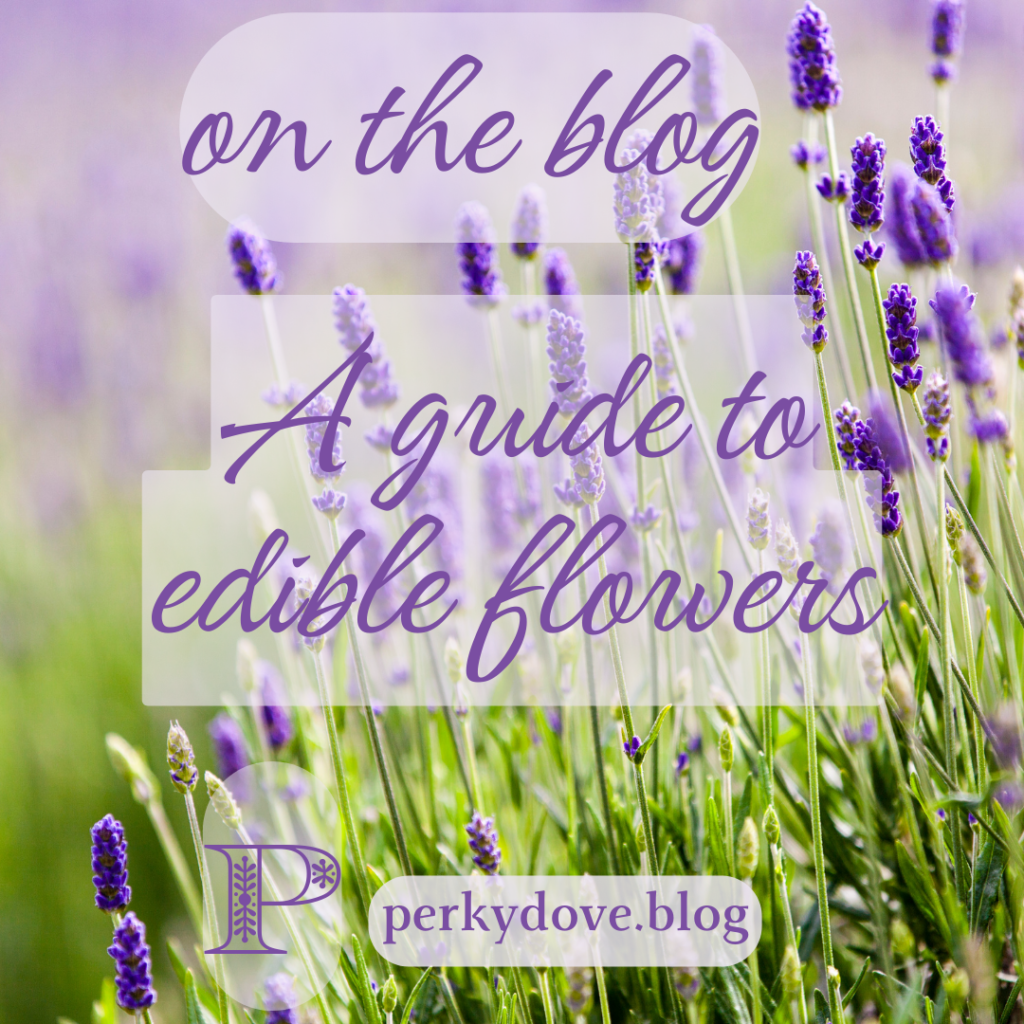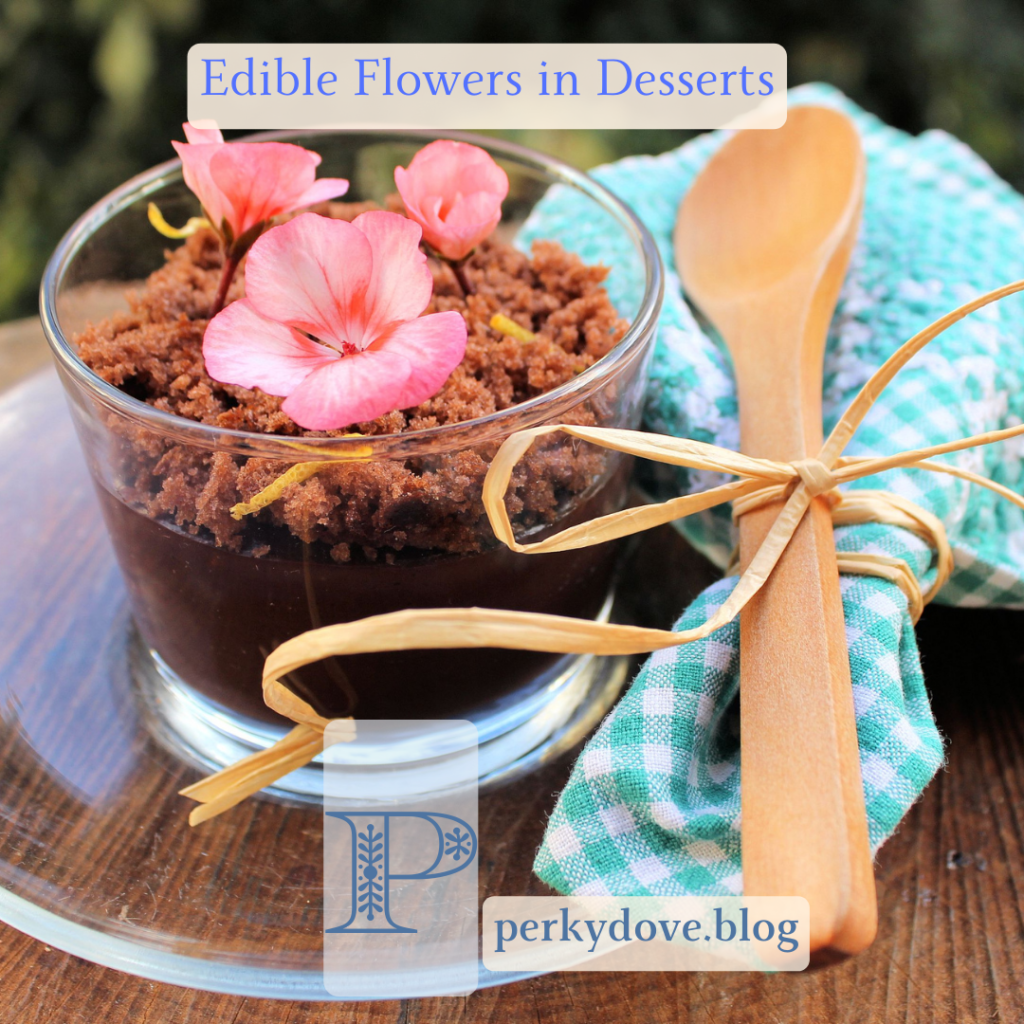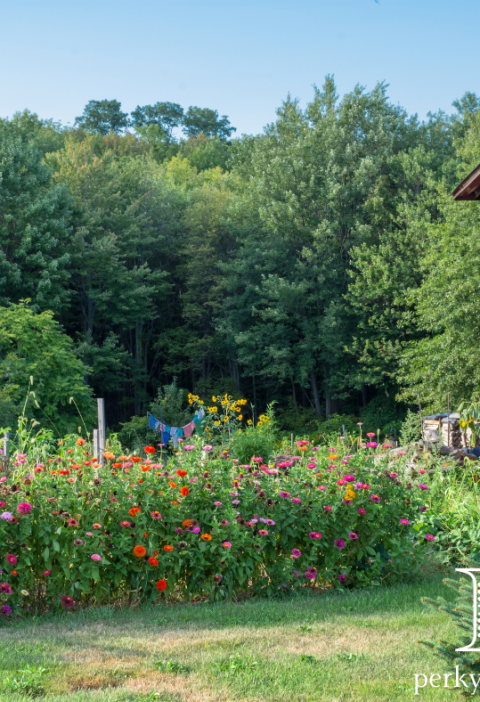We use affiliate links. If you purchase something using one of these links, we may receive compensation or commission.

Edible flowers are a delightful addition to any dish. Not only do they add a pop of color and flavor, but they also offer a range of health benefits. However, not all flowers are safe to eat, and it’s important to know which ones are edible and how to prepare them properly.
In this guide, I will share my knowledge on edible flowers, including the most popular varieties, their flavor profiles, and how to use them in cooking. Whether you’re a seasoned chef or a home cook looking to add some flair to your meals, this guide will provide you with everything you need to know about incorporating edible flowers into your culinary repertoire. So let’s dive in and explore the wonderful world of edible flowers!
Safety Precautions
As with any type of food, it is important to take certain precautions when consuming edible flowers. Here are a few things to keep in mind:
Toxic Look-Alikes
It is important to be able to identify the specific type of flower you are consuming, as some flowers have toxic look-alikes. For example, the daffodil looks similar to the edible jonquil, but the daffodil is toxic if ingested. Always be sure to properly identify the flower before consuming it.
Allergic Reactions
Some people may have allergic reactions to certain types of flowers. If you have a known allergy to a specific type of flower, avoid consuming it. If you are unsure whether or not you are allergic to a particular flower, it is best to start with small amounts and monitor your reaction.
Safe Handling Practices
When handling edible flowers, it is important to practice safe food handling practices. Wash the flowers thoroughly before consuming them, and avoid using flowers that have been treated with pesticides or other chemicals. Additionally, only consume flowers that are fresh and have not wilted or begun to decay.
By following these safety precautions, you can enjoy the unique flavors and beauty of edible flowers without any negative consequences.
Benefits of Edible Flowers
As a lover of all things culinary, I am always on the lookout for new ingredients to add to my dishes. Edible flowers are a wonderful addition to any meal, not only for their aesthetic appeal but also for their nutritional value, culinary uses, and medicinal properties.
Nutritional Value
Edible flowers are a great source of vitamins and minerals. They contain antioxidants, which can help protect your body against free radicals and reduce the risk of chronic diseases. Some of the most nutrient-dense edible flowers include nasturtiums, calendula, and violets.
Culinary Uses
Edible flowers can be used in a variety of dishes, from salads and soups to desserts and cocktails. They add a pop of color and a unique flavor to any dish. Some popular culinary flowers include lavender, rose petals, and chamomile.
When using edible flowers in your cooking, it is important to make sure they are safe to eat. Some flowers are poisonous and should not be consumed. Always do your research and consult a reputable source before adding any new ingredient to your dishes.
Medicinal Properties
In addition to their nutritional and culinary benefits, many edible flowers have medicinal properties. For example, chamomile flowers are known for their calming properties and can be used to make a soothing
While it is important to note that edible flowers should not be used as a substitute for medical treatment, incorporating them into your diet can provide additional health benefits.
Overall, edible flowers are a versatile and nutritious ingredient that can add a unique touch to any dish. By incorporating them into your cooking, you can reap the benefits of their nutritional value, culinary uses, and medicinal properties.
Popular Edible Flowers
Nasturtiums
Nasturtiums are a popular edible flower with a slightly peppery taste. The flowers come in a variety of colors, including orange, yellow, and red. The leaves and seeds of the nasturtium plant are also edible and can be used in salads or as a garnish. Nasturtiums are easy to grow and are a great addition to any garden.
Real Dry Red Roses Buds, Food Grade for Tea Baking Crafting Wedding Confetti,Non-GMO Caffeine-free, 0.9 oz
Roses
Roses are not only beautiful, but they are also edible. The petals of the rose are the part that is commonly used in cooking. They have a sweet, floral flavor and can be used in a variety of dishes, including desserts and salads. It’s important to note that only the petals of the rose are edible, and you should avoid eating the stem and leaves as they can be toxic.
Lavender

Lavender is a popular herb that is known for its calming properties. However, it is also an edible flower that can be used in cooking. The flowers have a sweet, floral flavor and are commonly used in desserts, such as lavender shortbread cookies. Lavender can also be used to flavor drinks, such as lavender lemonade.
Pansies

Pansies are a delicate flower that come in a variety of colors, including purple, yellow, and white. They have a mild, slightly sweet flavor and are often used as a garnish for salads and desserts. Pansies can also be used to decorate cakes and cupcakes.
Marigolds

Marigolds are a bright and colorful flower that are commonly used in gardens. However, they are also edible and have a slightly citrusy flavor. The petals of the marigold can be used in salads, soups, and stews. It’s important to note that only the petals of the marigold are edible, and you should avoid eating the stem and leaves as they can be toxic.
Harvesting and Storage
Best Harvesting Practices
When harvesting edible flowers, it’s important to choose flowers that are at their peak freshness and have not been sprayed with any harmful chemicals. I recommend harvesting in the morning when the flowers are at their most fragrant. It’s best to use sharp scissors or pruning shears to cut the flowers from the plant, making sure to leave a small stem attached to the flower. Avoid touching the flowers with your hands as this can bruise them and cause them to wilt more quickly.
Cleaning and Preparation
Once you’ve harvested your edible flowers, it’s important to clean them thoroughly before using them in your
Storage Techniques
To keep your edible flowers fresh for as long as possible, it’s important to store them properly. Store the flowers in a cool, dry place, away from direct sunlight. You can wrap the flowers in a damp paper towel and store them in an airtight container in the refrigerator for up to a week. Alternatively, you can freeze the flowers by placing them in a single layer on a baking sheet and freezing them for a few hours before transferring them to a freezer-safe container. Frozen flowers can last for up to six months.
Incorporating into Cuisine
Edible flowers can add a unique flavor and visual appeal to a variety of dishes. Here are some ways to incorporate them into your cuisine:
Salads and Garnishes

Edible flowers can make a beautiful and tasty addition to salads and garnishes. They can be used to add color and texture to a dish. Some popular options include nasturtiums, pansies, and violets. When using edible flowers in salads, it’s important to remove any bitter parts, such as the pistil and stamen.

Desserts and Baking
Edible flowers can be used to add a subtle floral flavor to desserts and baked goods. Lavender, rose, and chamomile are popular options. They can be used to infuse flavor into sugar, butter, or cream, which can then be used in cakes, cookies, or other desserts. Edible flowers can also be used as a decoration on top of cakes or cupcakes.

Beverages and Cocktails
Edible flowers can be used to add a unique flavor and visual appeal to beverages and cocktails. Hibiscus, lavender, and rose are popular options. They can be used to make teas, syrups, or infusions, which can then be used in cocktails or other beverages. Edible flowers can also be used as a garnish on top of cocktails.
Overall, edible flowers can be a fun and creative way to add flavor and visual appeal to your cuisine. Just be sure to research which flowers are edible and safe to consume before using them in your dishes.

Growing Your Own Edible Flowers
Choosing the Right Species
When selecting edible flowers to grow in your garden, it’s important to choose the right species. Some popular options include nasturtiums, violets, roses, lavender, and calendula. These flowers are not only beautiful but also have a pleasant taste that can add a unique flavor and visual appeal to your dishes.
Soil and Sunlight Requirements
Edible flowers thrive in well-draining soil with a pH between 6.0 and 7.0. It’s also important to make sure your flowers get plenty of sunlight. Most edible flowers require at least six hours of direct sunlight per day. If you’re growing your flowers indoors, make sure they’re placed near a window that gets plenty of sunlight.
Pest Management
One of the biggest challenges when growing edible flowers is pest management. To prevent pests from damaging your plants, it’s important to keep them healthy and well-nourished. You can also use natural pest control methods such as spraying your plants with a mixture of water and dish soap or using companion planting to attract beneficial insects to your garden.
By following these simple tips, you can easily grow your own beautiful and delicious edible flowers. Whether you’re adding them to salads, desserts, or drinks, they’re sure to impress your guests and add a unique touch to your meals.
Regional Guide to Edible Flowers
North America
North America is home to a variety of edible flowers that are both delicious and nutritious. Some of the most popular edible flowers in North America include:
- Dandelion: The entire dandelion plant is edible, including the bright yellow flowers. They have a slightly sweet taste and are often used in salads or as a garnish.
- Nasturtium: These bright, peppery flowers are commonly used in salads and as a garnish for savory dishes.
- Rose: The petals of the rose flower are edible and have a delicate floral flavor. They can be used in desserts, teas, and as a garnish.
A North American Field Guide to Over 200 Natural Foods
Europe
Europe has a long history of using flowers in cooking. Some of the most popular edible flowers in Europe include:
- Lavender: The delicate purple flowers of the lavender plant have a sweet, floral flavor and are often used in desserts and teas.
- Elderflower: These small, white flowers have a sweet, floral flavor and are commonly used to flavor drinks and desserts.
- Viola: Also known as pansies, these colorful flowers have a slightly sweet flavor and are often used in salads or as a garnish.
Asia
Asia is home to a wide variety of edible flowers that are used in traditional cuisine. Some of the most popular edible flowers in Asia include:
- Chrysanthemum: The petals of the chrysanthemum flower are often used in teas and soups. They have a slightly bitter taste and are believed to have medicinal properties.
- Jasmine: The delicate white flowers of the jasmine plant have a sweet, floral flavor and are often used to flavor tea.
- Hibiscus: The bright red flowers of the hibiscus plant have a tart, cranberry-like flavor and are commonly used to make
tea .
Australia
Australia has a unique selection of edible flowers that are used in traditional Aboriginal cuisine. Some of the most popular edible flowers in Australia include:
- Wattle: The bright yellow flowers of the wattle tree have a sweet, nutty flavor and are often used in desserts and as a garnish.
- Kangaroo Paw: These unique flowers have a slightly sweet flavor and are often used in salads or as a garnish.
- Native Violet: These small, purple flowers have a sweet, delicate flavor and are often used in desserts and as a garnish.

As I conclude this blog post, I can’t help but be amazed by the beauty and versatility of edible flowers. Their vibrant colors and delicate flavors have truly enriched my culinary experiences. I encourage you to explore the world of edible flowers and unleash your creativity in the kitchen. Whether it’s adding a pop of color to your salads, infusing floral notes into your desserts, or simply garnishing your dishes with a touch of elegance, edible flowers have so much to offer. Take a leap and start incorporating these delightful blooms into your cooking. Let’s savor the beauty and flavors of nature in every bite. Join me in embracing the wonderful world of edible flowers!
The Ultimate Herbalist’s Survival Manual
Join me in adding a touch of floral magic to your meals! Explore the world of edible flowers and elevate your culinary creations with nature’s vibrant bounty.










